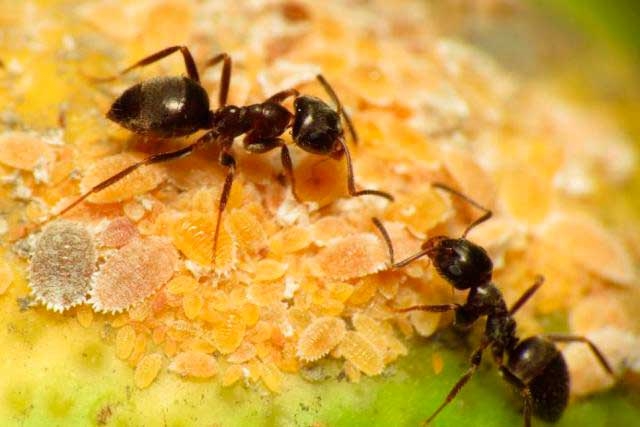A team of European scientists aim to use synthetic biology to produce insect sex pheromones in plants and fungi.
Semiochemicals (pheromones) are emitted by insects for communication. The most widely known of these are sex pheromones that are used in mating disruption—a core tactic in IPM systems.
The Susphire project is building on the success of the Polytechnic University of Valencia’s project SexyPlant in which they produced insect sex-pheromones in plants.
Scientists have already genetically engineered a plant to produce the sex pheromones of moths and are now optimising that, as well as working on new pheromones, such as those of the mealybug that plague citrus growers.
Using plants as bio-factories
The new work uses a plant as a bio-factory, powered by the sun.
Other researchers are also working on brewing sex pheromones using genetically modified yeast— a process already widely used to make insulin for diabetic patients.
It is well known that existing pesticides often harm pests and beneficial insects such as bees. Some are now pervasive in the environment around the world, and may be partly to blame for crashing insect populations.
The world’s most widely used insecticides, neonicotinoids, were banned from outdoor use by the European Union in April.
In contrast, pheromones are specific to each species and, being used in tiny amounts in the field, do not contaminate the wider area.
GM plant releases sex pheromones
“For many species pheromone manufacturing is difficult and expensive,” said Nicola Patron, at the Earlham Institute, UK.
“Bioengineering can provide viable alternatives to manufacturing and result in greater use of pheromones, which are kinder to the environment.”
A pilot project called SexyPlant created a genetically modified tobacco plant that produces and releases the sex pheromones of the cotton bollworm and navel orange worm, both larvae of moths.
The same plant has already been engineered by others to produce Ebola antibodies and polio vaccine.
New research
In the new work, the pheromone will first be harvested from the plant and put in traps or dispensers to prevent pests mating. But in the future, plants producing the pheromones could be planted alongside the crops they protect.
See this article in Tree Fruit Dec 2018




















